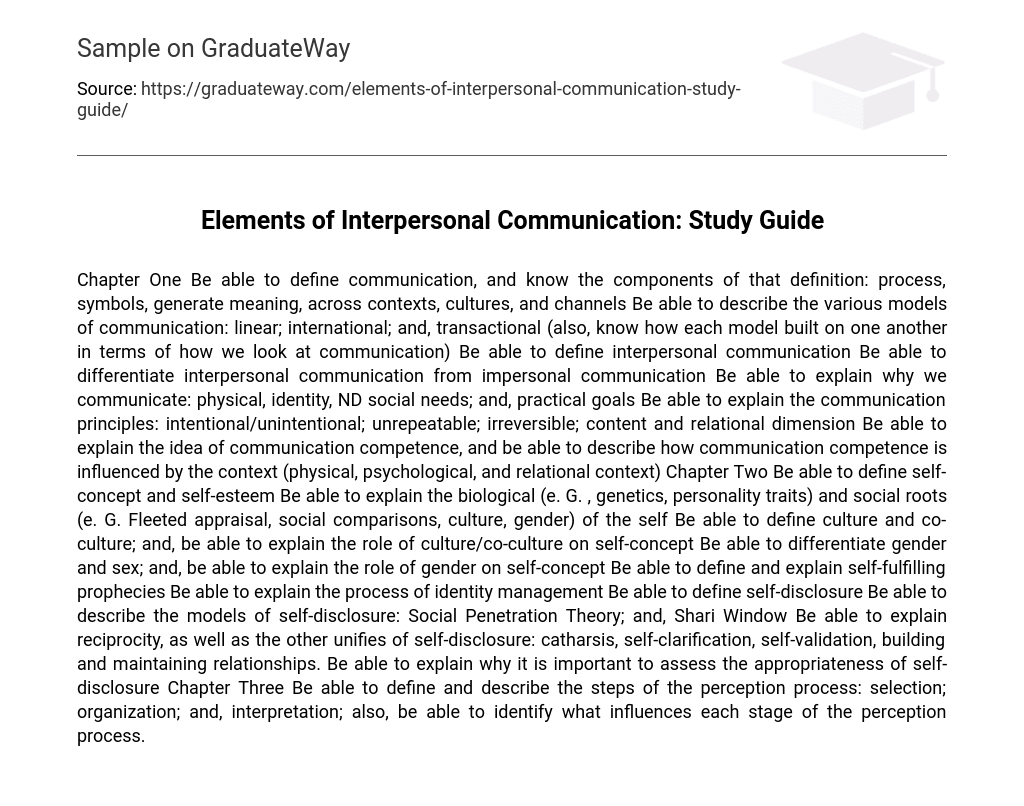Chapter One Be able to define communication, and know the components of that definition: process, symbols, generate meaning, across contexts, cultures, and channels Be able to describe the various models of communication: linear; international; and, transactional (also, know how each model built on one another in terms of how we look at communication) Be able to define interpersonal communication Be able to differentiate interpersonal communication from impersonal communication Be able to explain why we communicate: physical, identity, ND social needs; and, practical goals Be able to explain the communication principles: intentional/unintentional; unrepeatable; irreversible; content and relational dimension Be able to explain the idea of communication competence, and be able to describe how communication competence is influenced by the context (physical, psychological, and relational context) Chapter Two Be able to define self-concept and self-esteem Be able to explain the biological (e. G.
, genetics, personality traits) and social roots (e. G. Fleeted appraisal, social comparisons, culture, gender) of the self Be able to define culture and co-culture; and, be able to explain the role of culture/co-culture on self-concept Be able to differentiate gender and sex; and, be able to explain the role of gender on self-concept Be able to define and explain self-fulfilling prophecies Be able to explain the process of identity management Be able to define self-disclosure Be able to describe the models of self-disclosure: Social Penetration Theory; and, Shari Window Be able to explain reciprocity, as well as the other unifies of self-disclosure: catharsis, self-clarification, self-validation, building and maintaining relationships. Be able to explain why it is important to assess the appropriateness of self-disclosure Chapter Three Be able to define and describe the steps of the perception process: selection; organization; and, interpretation; also, be able to identify what influences each stage of the perception process.





